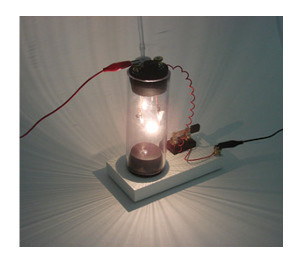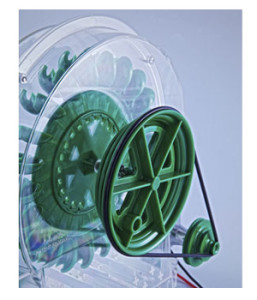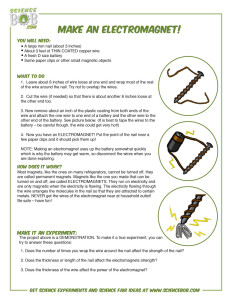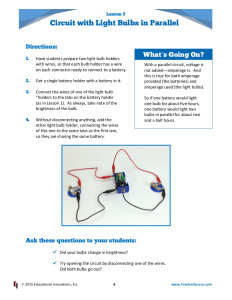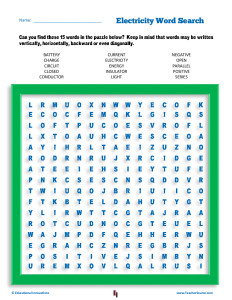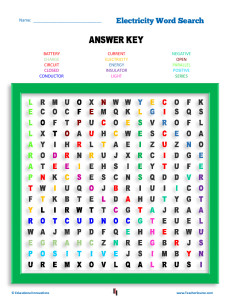
The awesome thing about teaching a lesson on electricity is that students of all ages can get a “charge” from figuring out how to make a circuit work. And that’s just the beginning!
Teaching electricity opens the door to many related topics—alternative energy sources, lightning, static electricity and magnetism, to name a few.
We’ve put together a Super! Wow! Neat!® assortment of teacher-tested electricity discussion starters, research ideas, worksheets and more. Scroll down for ideas. Let us know how they work in your classroom!
Depending upon the grade you are teaching, there are many areas for your students to study. You might:
♦ Invent wacky circuit games using our best-selling Energy Ball or our new Energy Tube. These little gizmos are so much fun, they take all the work out of explaining conductivity as well as open and closed circuits to even the youngest students.
TAKE THE EI CHALLENGE:
How many students can you include in your energy circle? Some teachers report being able to make a series circuit with 60 or more students! Can your class break that record?
Send your photo to socialmedia@TeacherSource.com.
♦ Travel back in history to investigate how the forces of electricity and energy were studied and eventually harnessed. As a class, create a Who’s Who of Electricity Pioneers display or website to share the discoveries of Benjamin Franklin, James Watt, Alessandro Volta, Thomas Edison, Nikola Tesla, Michael Faraday and Thomas Seebeck, to name just a few.
♦ 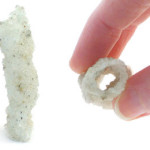 Investigate the mighty power of lightning. Who isn’t fascinated (and sometimes a bit frightened) by the sight of a jagged bolt of electricity from the sky? Your students can learn about fulgurite, the amorphous glass tubes that are formed when lightning hits sand. Share this easy-to-read explanation from the Society for Science & the Public. Go a step further and bring in a real sample of fulgurite for your students to examine.
Investigate the mighty power of lightning. Who isn’t fascinated (and sometimes a bit frightened) by the sight of a jagged bolt of electricity from the sky? Your students can learn about fulgurite, the amorphous glass tubes that are formed when lightning hits sand. Share this easy-to-read explanation from the Society for Science & the Public. Go a step further and bring in a real sample of fulgurite for your students to examine.
♦ Explore the difference between direct current (DC) and alternating current (AC), plus take a look inside a battery and a light bulb with this PBS web animation (click sample below to access the full article).
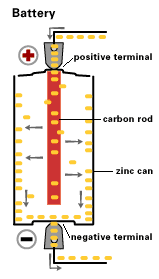
Chemical reactions within the battery cause electrons to be stripped away from the carbon electrode. Electrons will try to flow from a battery’s negative terminal to its positive one, if allowed.
♦ Retrace the steps of Edison in your classroom with our Build Your Own Light Bulb Kit. Don’t miss “Reinventing Edison: Build Your Own Light Bulb,” a blog by the kit’s creator that’s loaded with wonderful suggestions for an inquiry-based demo lesson.
♦ Investigate new advances in alternative or green energy sources. We continue to expand our selection of green energy and solar powered kits. They make wonderful in-class demonstrations or can easily be used as science fair projects.
The Salt Water Car Kit gives children a chance to learn about new forms of clean energy while building and powering their very own toy.
The PowerWheel is a micro hydro generator—an amazing tool for teaching lessons about energy, hydropower and other renewable sources of energy.
Use our Solar Cells to power small motors or other electrical devices which draw small amounts of current.
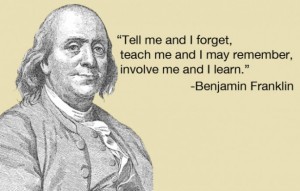
♦ Say a big “thank you” to Benjamin Franklin. The Benjamin Franklin Tercentenary website (from Franklin & Marshall College) has some wonderful lesson plans related to this founding father. Our favorite is an experiment packet for middle school students: “Let’s Throw an Electric Science Party!” For a clever interactive review of Ben Franklin’s contributions to the study of electricity, don’t miss PBS’s “Benjamin Franklin: How Shocking!” site.
♦ Science Bob’s website has some awesome science fair projects and easy-to-follow instructions for demonstrations on magnetism, static electricity and more.
* PRINTING INSTRUCTIONS: Just click on the image you’d like to print. A new window will open with a full-sized PDF version to print.
If you need to install an Adobe PDF Reader, click here.
♦ Build series and parallel circuits in many configurations. Our blog post, “Experimenting with Our Electricity Kit,” offers a simple explanation of how to introduce these concepts to your students. And the lesson guide to our Light Bulb Experiment Kit goes even further with step-by-step instructions for five different activities.
♦ Just for fun, share our Electricity Word Search with your class. It’s the kind of brain game that keeps kids’ brain neurons charging. Click on small images below to access full-size, printable versions.
click image for full-size, printable version
click image for full-size, printable version
